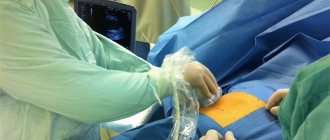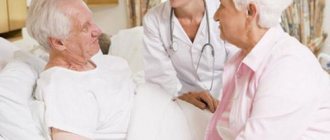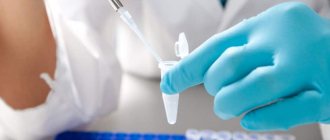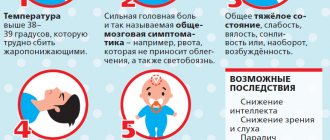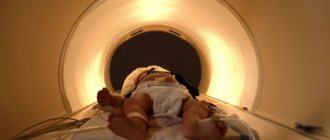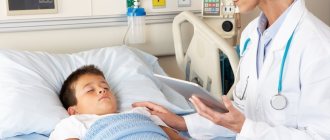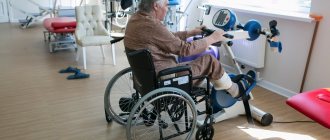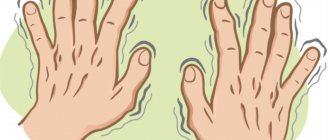Meningitis
- is an infectious-inflammatory process that affects the meninges. The development of the disease is associated with the vital activity of bacteria, protozoa, viruses and fungi that penetrate the body. The disease can be either independent or a complication of another pathological process. However, in all cases it is acute and requires timely treatment. Rehabilitation after meningitis differs in the range of measures, duration and intensity and depends on the severity of the lesion and symptoms.
Get advice from a rehabilitation specialist or make an appointment
+8
Record
Causes of meningitis in children
The main cause of meningitis in adults is infection in the membranes of the brain, the causative agents of which can be:
- viruses – herpetic, mumps;
- bacteria - staphylococci, meningococci, streptococci, Escherichia coli and tuberculosis;
- fungal infections - mycoses, candida.
Pharmacopuncture
Occupational therapy for children
Hirudotherapy
Vojta therapy
Shock wave therapy
Vacuum therapy
Comprehensive rehabilitation after meningitis
After recovery, the patient needs rehabilitation after meningitis. Recovery from illness, especially after severe forms of the disease, can last for several months. For two years after the illness, the patient must be observed by a neurologist at intervals: in the first year, 1 examination every 3 months; subsequently, a specialist should be visited at least once every six months. This measure allows you to promptly identify possible complications of the disease and begin their treatment.
Rehabilitation after meningitis at the Yusupov Hospital has several components:
- physiotherapy is used to restore the functions of the central nervous system. When restoring patients, both classical and hardware techniques are used using European equipment;
- physical therapy at the Yusupov Hospital is carried out by experienced instructors who help patients gradually restore movement;
- The diet during the rehabilitation period is used to replenish vitamins, minerals and other important components. Experts recommend including lean meat and fish, vegetables and fruits after heat treatment, and dairy products in your diet. Baby food should be crushed, as large food particles can damage the mucous membrane;
- occupational therapy is a set of methods aimed at adapting the patient to everyday life. Specialists in this field help adapt the available opportunities to their lifestyle and habits, help the patient perceive himself as a full-fledged person, and enjoy life. Occupational therapists help patients cope with limitations that may arise during the course of their illness;
- Cognitive therapy includes exercises to restore attention, memory and logical thinking. At the Yusupov Hospital, experienced psychologists who know effective techniques interact with patients.
Doctors at the Yusupov Hospital develop a rehabilitation program taking into account the patient’s condition, physical capabilities and preferences. An individual approach allows you to achieve a positive result and relieve the patient from the following complications - weakness, low mood, fatigue, malaise, intellectual impairment, paralysis, convulsions.
Complications
- cognitive disorders: deterioration of memory, quality of intelligence and mathematical abilities;
- headache
- delayed psychomotor and psychospeech development
- behavioral disorders;
- general cerebral symptoms (nausea, vomiting);
- asthenia, depression, apathy;
- confusion;
- epilepsy;
- disturbances in motor activity: loss of coordination, partial or complete loss of control over one or more limbs.
Initial consultation with a rehabilitation specialist
+8
Record
to the doctor
Methods of sanatorium-resort rehabilitation of patients after meningitis
In order to improve cerebral hemodynamics and microcirculation, medicinal electrophoresis based on vasodilators and transcranial electroanalgesia are used; contrast showers and baths, shower massage and electrosleep therapy are used to restore the functions of the central autonomic nervous system. Patients are also prescribed low-frequency magnetic therapy.
Most patients with meningitis and its consequences are indicated for therapeutic exercises aimed at combating asthenia (weakness, fatigue) and reduced performance, restoring health in case of paresis, vestibular disorders and coordination problems. The use of physical treatment methods and exercise is contraindicated for acute meningitis, decompensated hydrocephalus, mental disorders, decompensated heart and pulmonary failure and brain abscess.
We would like to note that depending on which resort the patient goes to, the course of treatment may include procedures using local natural factors - mineral water and mud. Please note that before traveling to the resort it is important to obtain recommendations from a neurologist.
Criteria for the effectiveness of sanatorium-resort rehabilitation
- reducing the frequency and intensity of headaches;
- decreased muscle rigidity;
- normalization of sleep and psycho-emotional state;
- improvement of laboratory parameters of general analysis of blood and cerebrospinal fluid.
Support
Are you not sure what criteria to use to choose a resort or sanatorium?
Don't know how to book?
Call us and our support staff will help you.
FAQ
Evgeniy Korostelev
Head of Help Desk
Help Desk Presentation
From Germany
+4974328093002
From other countries
+420355455981
The doctor's consultation
Free help from a health resort doctor
If you find it difficult to independently search for a resort and sanatorium that is optimally suited for treating your diseases, then take advantage of a free consultation with a health resort doctor Elena Khorosheva.
Submit your question here
Elena Khorosheva
Chief physician sanatoriums.com
Presentation by doctor Elena Khorosheva
Goals of rehabilitation of children after meningitis
The goal of rehabilitation treatment is to restore lost functions as much as possible and prevent complications. To achieve this goal, we use modern recovery and treatment methods, which we combine depending on the severity of the disease and the characteristics of the child.
Rehabilitation after meningitis includes the following main components:
- Doctors' supervision
. As a rule, the child is observed by a neurologist and a rehabilitation specialist. In case of severe movement disorders and the development of contractures and deformities, an orthopedist is included in the rehabilitation team. - Drug therapy
- Physiotherapy
. We select a physiotherapeutic treatment program individually for each child. - Physical rehabilitation
. Formation and restoration of motor skills. Physical rehabilitation activities include exercise therapy and ergotherapeutic training. - Classes with a neuropsychologist
for disorders of higher nervous functions such as memory, attention, thinking. - Classes with a speech therapist
for speech and swallowing disorders.
Occupational therapy
Bobath therapy
What is the PNF technique?
Manual therapy
Reflexology
Kinesiotherapy
Effective recovery after meningitis is the daily work of the medical team, which improves the quality of life of even severe patients.
Consequences of meningitis and rehabilitation
Consequences of meningitis and rehabilitation
Meningitis is an inflammation of the meninges. It can occur as an independent disease or as a complication of another pathology. There are different types of disease depending on the pathogen. According to the type of inflammation, meningitis can be serous or purulent. According to the speed of development - fulminant, acute, subacute and chronic. The latter often occurs as a secondary disorder due to an infection that is already present in the body.
It can be provoked by a variety of bacteria, viruses and fungi. The pathological process begins acutely, with an increase in temperature to 39 degrees. The patient is bothered by headache and vomiting. Meningeal symptoms appear - stiffness of the neck muscles, photophobia, drowsiness. There may be convulsions and loss of consciousness.
What complications can there be?
In 10% of cases, the bacterial type of inflammation ends in death. With a viral infection, this figure does not exceed 1%. The most common and least dangerous consequence of the disease is asthenia - weakness, malaise, depressed mood. Asthenic syndrome can last for several months.
Other more dangerous consequences of meningitis:
- intellectual disabilities;
- convulsive syndrome;
- paralysis and paresis;
- ischemic stroke;
- blindness, deafness.
Rehabilitation activities
Rehabilitation measures after illness:
- Diet. After suffering from meningitis, it is important to restore strength without loading or irritating the gastrointestinal tract. It is recommended to eat raw and cooked foods. You need to choose low-fat varieties of meat. It is best to cook porridge as a side dish. Fruit and vegetable purees, baked vegetables, and soups will be beneficial.
- Physiotherapy. It is recommended to go for a massage. The doctor may prescribe electrophoresis with vitamins and muscle relaxants. Procedures such as magnetic therapy and electrosleep may also be required.
- Exercise therapy. Physical therapy will help quickly restore normal muscle tone. It is recommended that you work with a trainer for the first time according to your doctor’s instructions.
- Cognitive therapy. Needed to restore memory.
Meningitis is a serious illness that requires monitoring. Even after suffering from an illness, you still need to be observed for some time by a neurologist and other specialists in order to identify possible complications in time and reduce the risk of their occurrence thanks to the doctor’s recommendations.
If you have the symptoms described in this article, be sure to make an appointment at our clinic.
Don't self-medicate! Even the smallest problem, if not treated correctly, can significantly complicate your life.
By contacting us, you can be sure that:
- Get quality advice.
- You will be treated by doctors with many years of experience.
- Only modern equipment and materials will be used.
- You can get medical help any day of the week. We work seven days a week.
+7 (495) 120-60-89
Sinusitis and meningitis: the relationship of diseases
Meningitis develops as an independent disease and can be a complication of pathological processes. Sinusitis and meningitis are interrelated, since the accumulation of pus in the maxillary sinuses can cause inflammation of the lining of the brain. It is important for people at risk to know how sinusitis turns into meningitis and what symptoms the patient experiences. The development of sinusitis by contact occurs against the background of an existing infectious process. Infection accumulated in the paranasal sinuses can cause inflammation of the meninges.
The development of complications with sinusitis is rare, since modern specialists use effective treatment methods. However, if treatment is untimely and ineffective against the background of reduced immunity, the patient may develop meningitis. If a patient suspects meningitis or their health has sharply worsened, it is necessary to consult a general practitioner or neurologist, who will prescribe an examination and determine the cause of the problem.
At the Yusupov Hospital, patients are provided with a wide range of medical services, which include examinations, therapeutic measures, disease prevention and recovery after illness. If meningitis is suspected, patients are urgently hospitalized.
The most important and revealing test for suspected inflammatory processes in the membranes of the brain and spinal cord is a lumbar puncture. It is necessary to examine the cerebrospinal fluid to identify the cause of inflammation and prescribe adequate therapy.
Symptoms of meningitis in adults
Meningitis usually has a sudden onset. The first symptoms of meningitis in adults are: fever, headaches, vomiting (the so-called meningeal triad). However, these pathological signs of meningitis also accompany other infectious diseases, so it is important to know the features of the manifestation of meningitis.
Meningitis is characterized by rapid development with pronounced signs of intoxication:
- headache;
- high fever and chills;
- confusion and loss of consciousness;
- convulsions;
- skin rash;
- muscle weakness;
- drowsiness;
- photophobia, increased skin sensitivity, reaction to sound;
- stiff neck;
- loss of appetite, nausea, vomiting;
- conjunctivitis;
- increased heart rate.
In patients with meningitis, the first sign of the disease is often a rash on the skin and mucous membranes. The rash is initially hemorrhagic in nature, sometimes spots and papules appear on the skin. The rash is considered an allergic reaction to medication.
Over the next few hours, hemorrhagic elements of various sizes and shapes appear. They may look like small spots or stars. Elements of the rash may merge and form spots.
Make an appointment
Headache
A severe headache should alert you. Headaches caused by meningitis feel different from other types of pain. Their intensity is much higher than that of headaches associated with dehydration or migraines. Taking over-the-counter pain medications does not provide relief.
Nausea and vomiting
Nausea and vomiting that occur with a headache are not absolute signs of meningitis. These symptoms may accompany other diseases, such as migraine. Close attention should be paid to other conditions that occur along with vomiting and nausea.
Vomiting with meningitis rarely occurs once, most often it is repeated, repeated, and is not associated with food intake.
Heat
An increase in body temperature, like other symptoms, may indicate the development of meningitis. With this disease, the temperature is usually much higher than with acute respiratory infections. In addition, taking antipyretic drugs for meningitis is ineffective - it is very difficult and short-term to reduce the temperature.
Pain in the neck
Quite often, patients with meningitis complain of pain and a feeling of tension in the neck, and it is difficult for them to turn or raise their head. This is due to pressure from the inflamed membranes of the brain. This symptom can also be observed when the neck muscles are strained or injured from a sudden movement of the head.
The suspicion of meningitis can be confirmed by bending the patient's hips in a horizontal position - the occurrence of pain in the neck while performing this movement is a sign of meningitis.
Difficulty concentrating
Inflammation of the meninges during meningitis is associated with perception difficulties in patients. It is difficult for them to read an article to the end, concentrate on a conversation, or complete the task at hand. The degree of confusion may worsen as brain swelling increases. In addition to lethargy and confusion, patients experience a drop in blood pressure, shortness of breath, and noisy shallow breathing.
Lethargy, drowsiness
Patients become unable to act independently, they develop drowsiness and lethargy. This condition occurs as a consequence of general intoxication of the body or cerebral edema. Bacterial meningitis can be accompanied by a sharp depression of consciousness and even coma.
Photophobia
A manifestation of photophobia in patients with meningitis is severe pain that occurs in bright light. The appearance of pain and sensitivity of the eyes, as a reaction to light, is considered an alarming signal, as it is a characteristic sign of meningitis.
Convulsions
Convulsions, sometimes with involuntary urination and disorientation in space, are observed in 20% of patients with meningitis. Their course is similar to epileptic, or the appearance of tremor of individual muscles and individual parts of the body is observed. The occurrence of seizures (generalized and local) is associated with irritation of the cortex and subcortical structures of the brain.
Characteristic rash
A hemorrhagic rash on the skin and mucous membranes is not a specific symptom of meningitis. It appears in 25% of patients with bacterial meningitis and is most often observed in diseases of a meningococcal nature, since it is meningococcus that causes damage to the internal walls of blood vessels. The appearance of skin rashes is usually observed 15-20 hours after the onset of the disease. In this case, the rash is polymorphic - it can be roseolous, papular, in the form of nodules or petechiae. The rashes have an irregular shape and may protrude above the skin level.
Psychomotor agitation, anxiety
Anxiety, agitation and disorientation occur in patients with a form of the disease such as meningoencephalitis at the onset of the disease. With the bacterial form of meningitis, similar symptoms may appear 4-5 days after the onset of the disease. After psychomotor agitation, patients may experience loss of consciousness or coma.
At the beginning of the disease, as well as in later stages, patients with meningitis may develop symptomatic psychosis, manifested by agitation or, conversely, lethargy, delirium, visual and auditory hallucinations.
Delusions and hallucinations can occur in patients with lymphocytic choriomeningitis and meningitis, which is caused by the tick-borne encephalitis virus.
If you have at least one of the above symptoms, you should immediately consult a doctor, since it is impossible to check meningitis yourself. To identify this disease and immediate treatment, qualified medical care is required.
The Neurology Clinic of the Yusupov Hospital offers high-quality diagnostics and treatment of meningitis of any form. The hospital's doctors use an individual approach in their work. Treatment tactics, developed individually for each patient, are explained to him in detail during the consultation process and are implemented as accurately as possible during therapeutic measures.
Expert opinion
Tatyana Aleksandrovna Kosova
Head of the Department of Rehabilitation Medicine, neurologist, reflexologist
Infectious diseases have been among the causes of death among the population for a long time. Meningitis is registered in 30–40% of cases. Unfortunately, despite the quality of the treatment, the possibility of death cannot be ruled out within the first 24 hours after the onset of clinical symptoms of the disease.
Among the etiological factors of meningitis, sinusitis is distinguished. The accumulation of purulent contents in the sinuses without proper treatment can lead to the spread of infection to the meninges. In such cases, meningitis is considered as a complication of sinusitis. The effectiveness of treatment for sinus inflammation depends on the quality of the diagnosis.
The Yusupov Hospital conducts a full range of examinations necessary to detect sinusitis and meningitis. The clinic’s doctors select the correct therapy based on the data obtained and the nature of the pathology. Doctors advise not to delay seeking medical help if symptoms of sinusitis develop and not to self-medicate. Without proper treatment, pus quickly spreads beyond the sinuses and penetrates into the brain area. An examination by a doctor will reduce the risk of a complicated course of the disease.
Causes of meningitis
The most common causes of meningitis are bacteria or viruses that affect the soft membranes of the brain and cerebrospinal fluid. In children, meningitis is caused mainly by enteroviruses that enter the body through food, water, and dirty objects. In adults, bacterial meningitis predominates, caused by the bacteria Streptococcus pneumoniae and Neisseria meningitidis. These bacteria do not cause meningitis when they are in the throat and nose, but when they enter the blood, cerebrospinal fluid and soft tissues of the brain, they provoke inflammation. Sometimes meningitis is caused by other types of bacteria. Group B streptococcus often causes illness in newborns infected during or after birth. Listeria monocytogenes also primarily affects infants and older adults. Meningitis often develops as a complication of various diseases and head injuries. The disease can be transmitted during childbirth, by airborne droplets, through mucous membranes, dirty water, food, rodent and insect bites.
